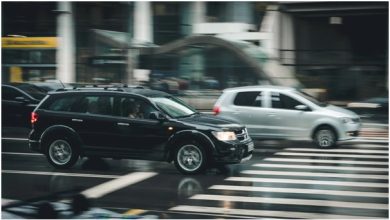Why we have a love-hate relationship with electric scooter
As a result of the lockdown, people are avoiding public transportation, and E Scooters, or standup electric scooters, are becoming increasingly popular. As governments aim to avoid surges in-car use and pollution, the relaxing of lockdowns has underlined the need for private, emission-free, socially distanced transportation. However, the narrative of e-scooters is one of a trendy tech item and a divisive mode of transportation. While they appear to be a pleasant and ecologically responsible option for short trips, they have raised a number of concerns regarding their safety and long-term viability in the last two years.
For more than a decade, electric scooters have been available for private purchase, but many remain unreasonably pricey. The appeal of shared, dockless models was inspired by their affordability and accessibility, which can be rented by the minute via a smartphone app.
However, as the popularity of e-scooters has grown, so has the number of incidents involving them, some of which have been fatal. Pedestrians and wheelchair users, particularly the blind and partially sighted, are at risk on pavements from e-scooters. However, riding scooters on highways without adequate infrastructures, such as bike lanes, is dangerous, especially due to a lack of laws. Even when not in use, e-scooters can be dangerous: because most sharing services are dockless, scooters are frequently abandoned on sidewalks, causing traffic congestion.
E-scooters have a lot of disadvantages as well as advantages, such as an increase in the number of accidents. You might wonder why individuals have a love-hate connection with electric scooters while acquiring one.
Any city that applied by the August 2020 deadline received e-scooter trials from the Department for Transport (DfT). Cities were then given a special RO allowing them to run e-scooters on their streets. Only well-defined trial locations and well-informed trial outcomes may be used by approved operators.
The UK government has increased financing for temporary cycle lanes, encouraging more people to cycle. Cities such as Leicester, for example, have spent a significant amount of money shutting down their bus networks and erecting temporary bike lanes. I feel that many of them are here to stay. As a result, the pandemic has provided the impetus for these experiments to be carried out on a much bigger scale than had been envisaged earlier.
The micro-mobility business appears to have been doomed from the outset, with so many misconceptions about electric scooters. The future of electric scooters is uncertain, as automobiles and public transportation can also suit customers’ needs. But what makes this well-known technological item such a popular choice for others? They are, without a doubt, the most cost-effective mode of transportation in cities and congested areas.
Why Electric Scooters are the Hot Choice?
In my perspective,e-scooters are growing increasingly popular for a variety of reasons. The first is the COVID-19 problem, which has caused individuals to be less likely to use public transportation. Individuals cherish the ability to use their own personal means of transportation, which is outside in the fresh air, particularly in this environment.
Another reason for its popularity, I believe, is that it is all very new. This is the first new car to be permitted on UK roads in over a century. E-scooters are extremely thrilling to ride and a lot of fun! So, curiosity, excitement, and the fact that they’re a very good way to travel around town have all contributed to their popularity.
One of the most obvious advantages of riding an electric scooter is that you may avoid the stress of traffic jams and safely navigate congested areas, getting to your destination quickly. Due to their lightweight and flexible nature, e scooters are easy to move and require no parking space. This cutting-edge technical gizmo can help you escape traffic jams and parking problems.
Why are e-scooters being seen as a viable choice for people’s commutes?
However, there has already been a slight shift, with a few more morning rides. It will be fascinating to see how commuter traffic develops, given I assume that most individuals continue to work from home despite the removal of restrictions.
We’re talking to some of our partner councils, like those in Essex and Milton Keynes, about how we can encourage people to ride their e-scooters first thing in the morning. This could be done by price, different deployment tactics, or other methods.
Wouldn’t it be great,
if you showed up at a train station near your workplace
and found an e-scooter?”
The e-scooter is critical in ensuring that post-pandemic commuters and travelers return to public transportation rather than driving their own cars. To be honest, not everyone will be interested in riding an e-scooter. Some individuals enjoy cycling, while others despise it, and the same is true of e-scooters. In less than a year, we’ve grown to nearly half a million riders across all of our markets. They have a huge following among their peers. And it’s not only what you’d anticipate – we have a significant age demographic.
E-scooters are not necessary, but they are a component of a necessary tool. So you might have e-bikes, e-scooters, and ordinary pushbikes, all of which will appeal to people who won’t ride the bus. People who don’t know how to ride a bike or who don’t want to ride a bike will also be present. Instead, they might hop on an e-scooter. The more options you give people for connecting to major transit or simply completing their two- or three-mile journey, which may be too far to walk, the better. E-scooters are another essential tool that towns can employ to encourage people to do the door-to-door route rather than just getting back in their automobile.
Conclusion :
We’re also attempting to achieve carbon neutrality. We now have fully electric distribution vehicles in the UK. Some schemes, such as London’s, still rely on diesel vans to distribute and carry their e-bikes, e-scooters, and other electric vehicles like throughout the city. Instead, we created the EAV 2Charge electric cargo bike. This is a four-wheeled, enclosed e-cargo bike with space for our batteries and three scooters in the back.
We’re trying out a few different tools, but our whole distribution fleet is now electric. Octopus Energy also provides all of our electric charging, which is entirely renewable. In the United Kingdom, Spin is a considerably newer, younger, and more nimble company. We’re already carbon-neutral, and micro-mobility should follow suit. If our supply chain collapses, we can’t claim to offer ecologically friendly vehicles.



